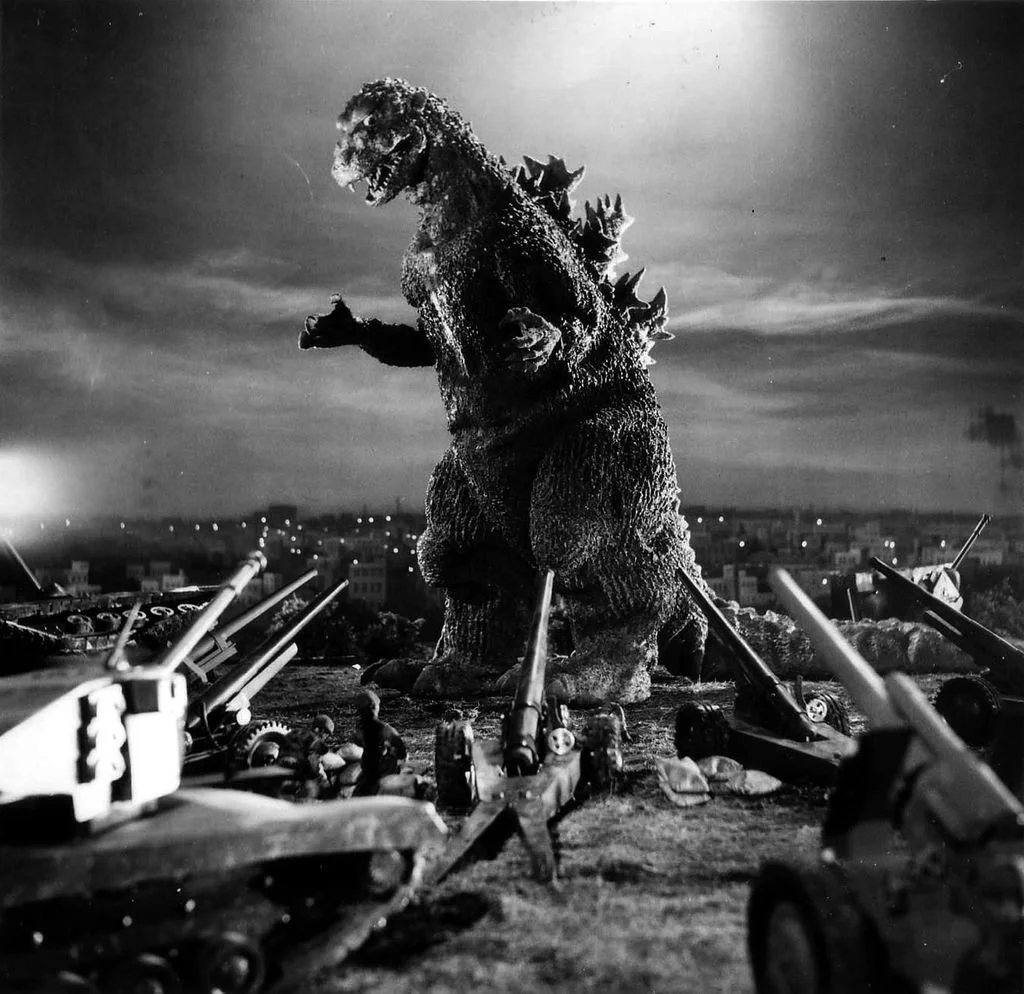NUCLEAR HORROR: AMERICA X JAPAN
On March 1, 1954, the United States of America detonated the world's first hydrogen bomb in the Castle Bravo test at Bikini Atoll. It is the most powerful thermonuclear detonation executed by the United States. Radioactive fallout permeated the surrounding area, affecting islanders as well as the crew of a Japanese fishing boat. This escalation in destructive capability reignited fears about the dangers of nuclear power throughout the world.
In this series, we examine the way these fears were expressed in the cinematic culture of two nations whose histories are inextricably linked to the power of the bomb: America, and Japan. In America, the country which developed the bomb, these fears often took the form of concerns about playing God, about science gone too far, and about the unintended consequences of our actions. They played on anxieties about how small and insignificant man seemed compared to the power he'd created. In Japan, the only country to have experienced the power of the bomb firsthand, these fears took much more direct forms once they were allowed expression: fear of destruction and death on a massive scale, of a genie that can never be put back in the bottle, of a Sword of Damocles always hanging overhead, of a danger you cannot do anything about.
Please join us as we present two sets of films, each matched against the other, as we look back on the horror of an age, 70 years later.
Art by Kara Mains.
Series Films
Them! (1954)
Directed by Gordon Douglas
February 29, 2024
The first of the "giant bug" movies that dominated the drive-in theatre screens of the late 1950s, Them! was no Poverty Row B-movie, but an A-budget monster picture from a studio not known for delivering them: Warner Brothers. Despite an outlandish premise, that of ants grown to gigantic size after exposure to radiation from the 1945 Trinity test, Them! approaches the subject matter with all seriousness and attention to detail.
Godzilla (1954)
Directed by Ishirō Honda
March 14, 2024
One month after the Castle Bravo test made victims out of the crew of the Japanese fishing boat Lucky Dragon No. 5, producer Tomoyuki Tanaka began work on the first Japanese film to directly address the topic of nuclear power and destruction. Inspired by the recent success of American films like The Beast from 20,000 Fathoms, production limitations would result in the creation of the "suitmation" technique by special effects director Eiji Tsuburaya to depict the implacable and unstoppable Godzilla, influencing decades of Japanese science fiction to come.
The Incredible Shrinking Man (1957)
Directed by Jack Arnold
March 28, 2023
After a string of excellent creature features for Universal International, director Jack Arnold delivers his science fiction opus in this film based on the novel from classic sci-fi horror author Richard Matheson. While certainly intended as a showcase for the special and visual effects work of Clifford Stine, Arnold uses the story of a man who finds himself ever shrinking after being exposed to radioactive fallout from offshore testing to explore a story about the loss of masculinity, made metatextually significant with the casting of closeted homosexual Grant Williams.
I Live in Fear (1955)
Directed by Akira Kurosawa
April 4, 2024
The only picture of famed director Akira Kurosawa to directly deal with the topic of nuclear war, I Live in Fear follows the story of a Japanese patriarch and factory owner played by Toshiro Mifune who becomes paralyzed with the fear of nuclear attack. He enacts a scheme to sell his factory and move his entire extended family to Brazil where he believes they will be safe, bringing him into conflict with everyone in his life he is trying to protect who now must decide if they embark on the difficult task of challenging their father's authority.







